The Surprising Location of Atlantis
Could the answer to one of the world's greatest mysteries have been under our noses all this time?
|
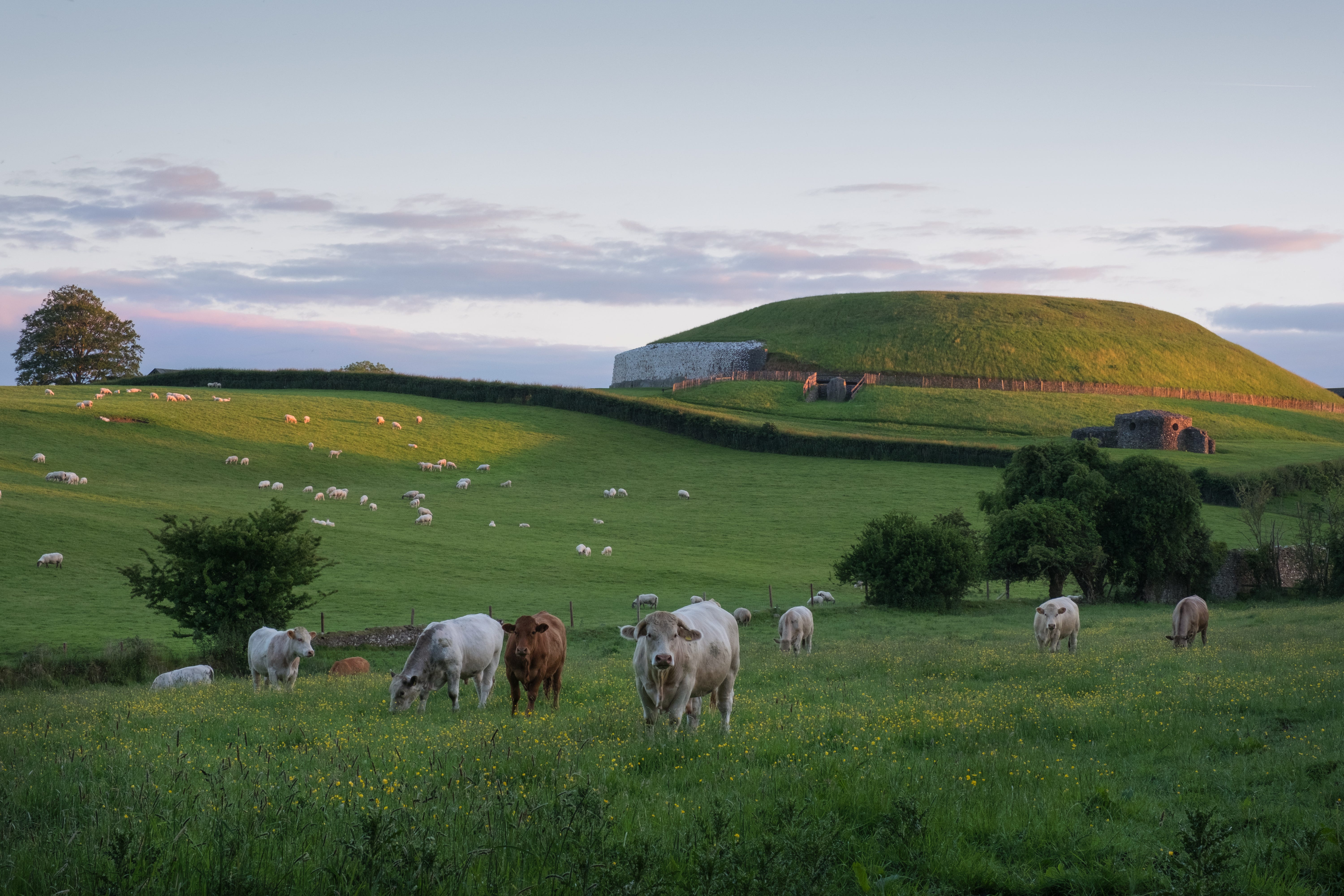
The legendary lost island of Atlantis. Everyone's heard of it and everyone's got an opinion.
Was it just an elaborate fiction given to us by the Greek philosopher Plato in 360 B.C.? Or was it a "mother culture", a real place with an advanced Stone Age civilization?
The answer is a bit of both.
The legend of Atlantis was passed down by word of mouth thousands of years before Plato first heard it, so it's hardly surprising that some details got distorted over time. Truth became history, history became legend and legend became myth. Plato's account is exaggerated, contains historical errors and even combines two separate locations. But at its heart there is a grain of truth.
Fast forward 12,000 years and that grain of truth is the basis for a new theory on where Atlantis really is.
Just the facts please
When you strip back the Atlantis legend to its very core, there are three key factors:
- The legend originated in Egypt
- Atlantis was an island in the Atlantic Ocean
- The Atlanteans were an advanced Stone Age seafaring people, a 'mother culture'
Name a place on earth from Antarctica to Africa, Sweden to South America, and someone will have claimed it was Atlantis. It seems that every time someone finds so much as a brick underwater, they claim they have found the mysterious island. Those three vital factors — the Egyptian connection, the Atlantic location and the advanced Stone Age civilization — are almost never included.
Scientists roll their eyes whenever a new Atlantis theory emerges and rightly demand proof. Surely if such a mother culture existed, a civilization which predated the Greeks and the Egyptians, then there must be some physical evidence?
Some people claim that Atlantis sank to the bottom of the ocean. However, geologists who have mapped the entire Atlantic seabed insist that this is not scientifically possible.
Therefore, if the Atlantis mother culture ever did exist, there must still be evidence above ground. Something concrete, not just wild speculation.
So how do we solve this riddle?
By looking at those three key factors.
That is what a team from Keystone University, a new and highly ambitious organisation based in Dublin, has done.
In the largest investigation ever conducted into the legend of Atlantis, Keystone's research team used cutting-edge techniques from multiple disciplines and reviewed thousands of ancient texts.
As a result, they have compiled over 1,000 pieces of evidence to support a surprising, yet oh-so-obvious location for the lost island of Atlantis.
Ireland.
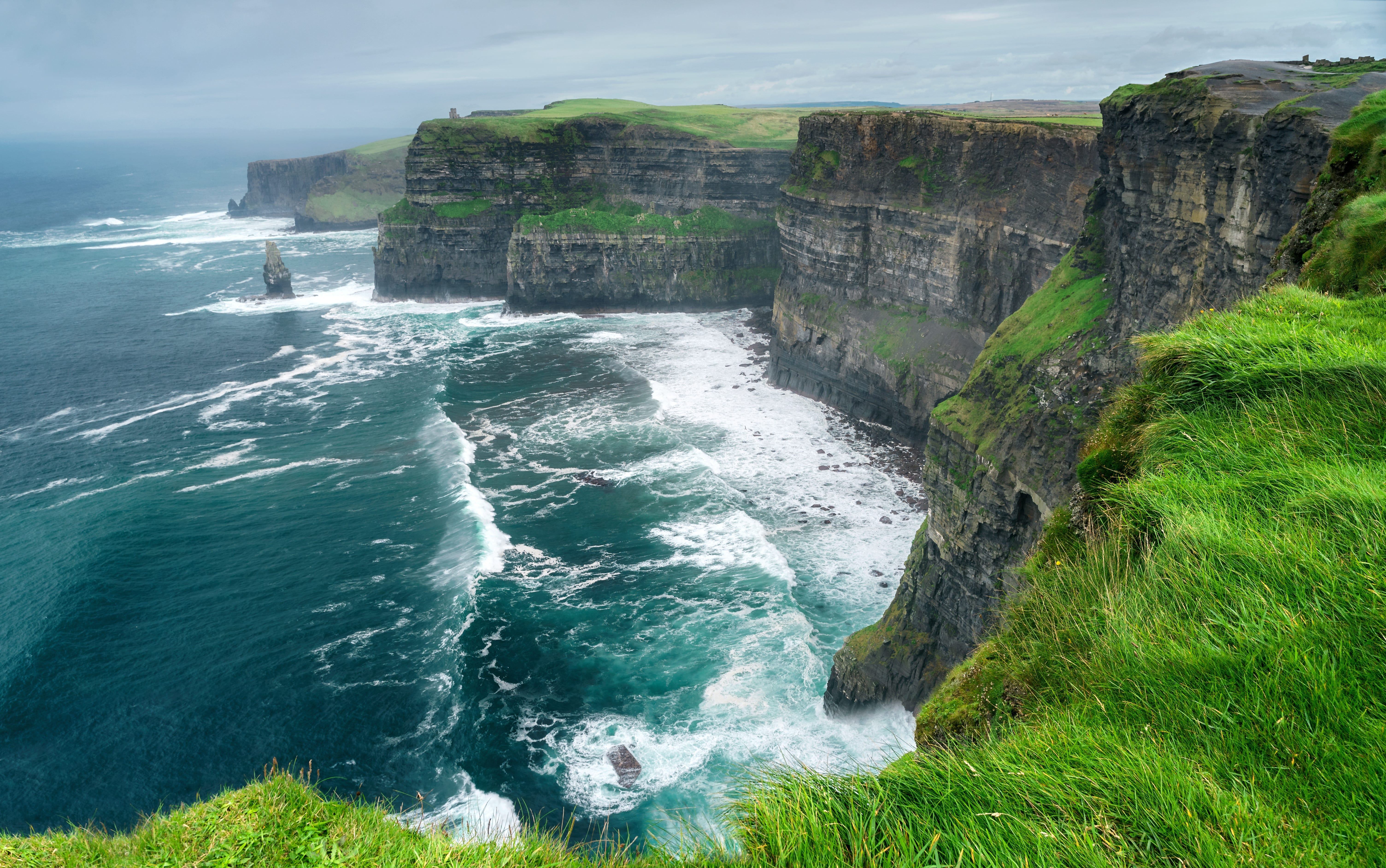
This is not the first time that Ireland has been cited as Atlantis. In 2004, Dr. Ulf Erlingsson, a renowned, prizewinning Swedish scientist, published a scientific paper and a book: Atlantis from a Geographer's Perspective which both claimed that Ireland was the legendary lost island. Furthermore, he claimed that the physical description and measurements of Plato's Atlantis perfectly matched Ireland.
His claims exposed him to the scorn and ridicule of his peers who informed him that writing seriously about Atlantis was tantamount to professional suicide for an academic. Yet he went ahead anyway. When interviewed he said, "Sometimes a scientist has to do what a scientist has to do."
The Keystone team agree with Erlingsson's findings. In addition, their research includes many additional pieces of evidence that simply weren't available to Erlingsson when he wrote his book 16 years ago.
The Egyptian Connection
The Egyptian civilisation predated that of the Greeks by thousands of years.
Ancient Egyptian texts describe how Egypt's ancestors came from a sacred island in the Atlantic Ocean that was devastated in a great flood.
Several ancient Egyptian texts, including The Book of the Dead, The Pyramid Texts and The Hymn of Rameses IV, tell of ten kings who ruled during the reign of the gods. One of these was Thoth, the founder of the Egyptian civilisation, who was born in a distant country to the west, a country which was across a body of water.
Other texts refer to this ancestral territory as the "sunset land" or the "island of the setting sun". To this day Ireland is referred to as the land of the setting sun.
Another name for this land in Egyptian texts was Urani, which is etymologically very close to Erin, the ancient name for Ireland.
According to Egyptian texts, this island in the Atlantic was overwhelmed by water. The ten kings, including Thoth, travelled east to safety by boat. Stories tell of the founders of Egypt arriving from an island in the Atlantic around 11,870 years ago.
A hieroglyphic text found at Abydos by Sir Flinders Petrie in 1901 in the cenotaph of Pharaoh King Menes says:
"King Menes, the Ruler of Mizraim [Egypt] made the complete course to the end of the Sunset Land. Sailing in ships, he completed the inspection of the Western Land. He built there a holding in Urani Land. At the Lake of the Peak, fate pierced him by a Hornet (Bee Sting) . . . This drilled tablet set up of hanging wood is dedicated to his memory."
As already mentioned, Urani is another name for Ireland. Intriguingly, when Pharaoh Menes' tomb was open, it was found to be empty. His body was elsewhere.
Explorer Laurence Waddell discovered the final resting place of Menes in Knockmany, County Tyrone, Ireland. He described how Sumerian linear writing on a boulder stone at the site was almost identical with that found in the pharaoh's empty Egyptian tomb.
It seems that Menes died from a bee sting in Ireland and was buried in Knockmany, County Tyrone, although the site has never been excavated to confirm this find. Nor, indeed, has Scotia's grave in County Kerry, which is widely accepted as being the resting place of an Egyptian pharaoh's daughter who arrived in Ireland around 1700 B.C.
In fact, very few of Ireland's ancient sites have been excavated. However, some startling evidence has been found at the handful of sites that have been examined.
A royal Egyptian bead necklace was found at the Hill of Tara in County Meath during an excavation in 1955, as were the remains of a Barbary ape. These small monkeys are native to North Africa, in the region around the Atlas Mountains near the early Irish settlement of Cerne (the Eye of the Sahara/Plato's city of Atlantis).
A 2,500-year-old Barbary ape skull was also found during excavations at Navan Fort in County Armagh. What makes these particular finds so fascinating is that Thoth, the god-king founder of Egypt mentioned earlier, is often represented as a baboon or North African ape.
The Atlantic Location
The most obvious characteristic of Atlantis is that it was an island located in the Atlantic Ocean.
Ireland is an island in the Atlantic with an ancient people, language and culture. And, as you would expect from an early, advanced civilization, there are an estimated 100,000 Stone Age constructions still standing, including the most spectacular megaliths on earth. Similar constructions (mounds, cairns, stone circles, dolmens, passage tombs and so on) are found all over the globe. It seems that the entire world, not just Ireland, has a stunning and forgotten ancient history.
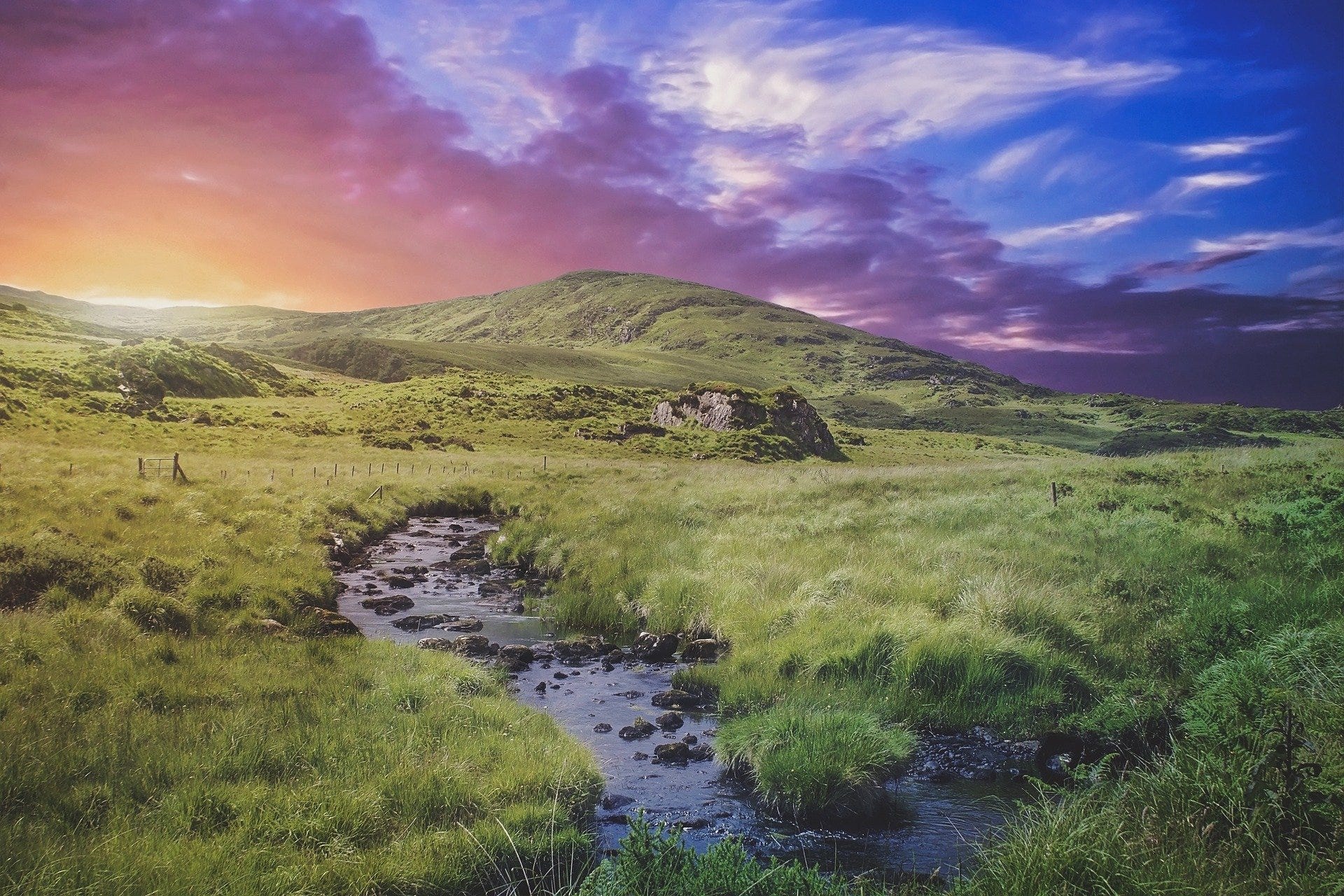
There are many descriptions of Plato's Atlantis that perfectly fit Ireland, while there are also many that don't. Plato's legend is useful but unreliable because it combines two separate but related places, a lot of exaggeration and several historical errors. Looking at the parts that do match Ireland we find the following:
- Plato's Atlantis is an island in the Atlantic with a fertile, circular plain surrounded by mountains that descend towards the sea. Ireland is the only island on Earth with these features.
- Plato's Atlantis has a temperate climate capable of producing two crops per year. Ireland has one of the most temperate climates on earth and to this day is capable of producing two crops a year: winter and spring barley. Meanwhile, Ireland's Ceide fields are the oldest agricultural fields in the world.
- Plato's Atlantis has many hot and cold springs. Ireland has 27 warm springs and thousands of cold ones, known locally as "holy wells".
Plato's tale also describes the city of Atlantis: a huge circular city with an abundance of elephants, gold and ivory. This is a reference to the ancient city of Cerne, an early Irish settlement in Mauritania, Africa. Cerne is derived from the Irish word cairn, which means stacked or piled rocks. Cairns are also heavily associated with the Greek messenger god Hermes and his Egyptian equivalent Thoth. The site of the city of Cerne, Plato's lost city of Atlantis, is also known as the Eye of the Sahara or the Richat structure.
Interestingly, in Greek history the name Cerne actually refers to two separate places: an African city near the Atlas mountains and an island in the Atlantic Ocean that was 12 days' sail from the Strait of Gibraltar. Similarly, Plato's Atlantis is a combination of the same two separate places: the island of Atlantis (Ireland) and the City of Atlantis (City of Cerne/the Eye of the Sahara, Mauritania). In Greek mythology Atlas is the first king of two separate places: the Island of Atlantis and the kingdom of Mauritania, Africa. The Atlas mountains, which encircle the Eye of the Sahara, still bear his name.
The Greek Diodorus, in his Library of History describes how the Atlantians were a civilised people who had a settlement called Cerne near the Atlas mountains. It was here that the warlike Amazons, a ferocious army of female warriors from Libya, slaughtered the Atlantians before attacking Greece and waging war in the region. Greek history is very consistent in supporting the account of Diodorus, but not that of Plato that it was actually the Amazons who attacked Greece, not the Atlantians.
Old Irish annals contain many records of voyages to Greece, Mauritania and Egypt. The female Amazon warriors are also mentioned, as well as an attempted invasion of Ireland by the Greeks and Romans who were defeated at the Battle of Ventry in County Kerry. Perhaps it's here, on Ireland's wild Atlantic shore, that Rome's famous missing Ninth Legion met their demise?
Irish Tsunami?
Plato describes how Atlantis was 'swallowed by the sea'. This is reference to a huge tsunami which decimated Stone Age Ireland. Virtually every culture on Earth has an origin story involving a great deluge. What is unique about the Irish is they have several records of life before, during and after this great flood. The ancient Irish annals even contain the names of the flood survivors who managed to escape by boat or survived by reaching higher ground. On Ireland's western coast there are folk tales of a giant tsunami around 12,000 years ago. Similar tales are found in Iona, Scotland.
An exciting discovery was made back in 2009 at Fanor Beach, north Clare. An early human inhabitation was discovered, dating back 6000 years. It has evidence of a layer of organic matter covering part of the settlement ,which archaeologists believe is evidence of an Irish tsunami. If it happened 6000 years ago, it could have happened prior to that as well, on a much larger scale.
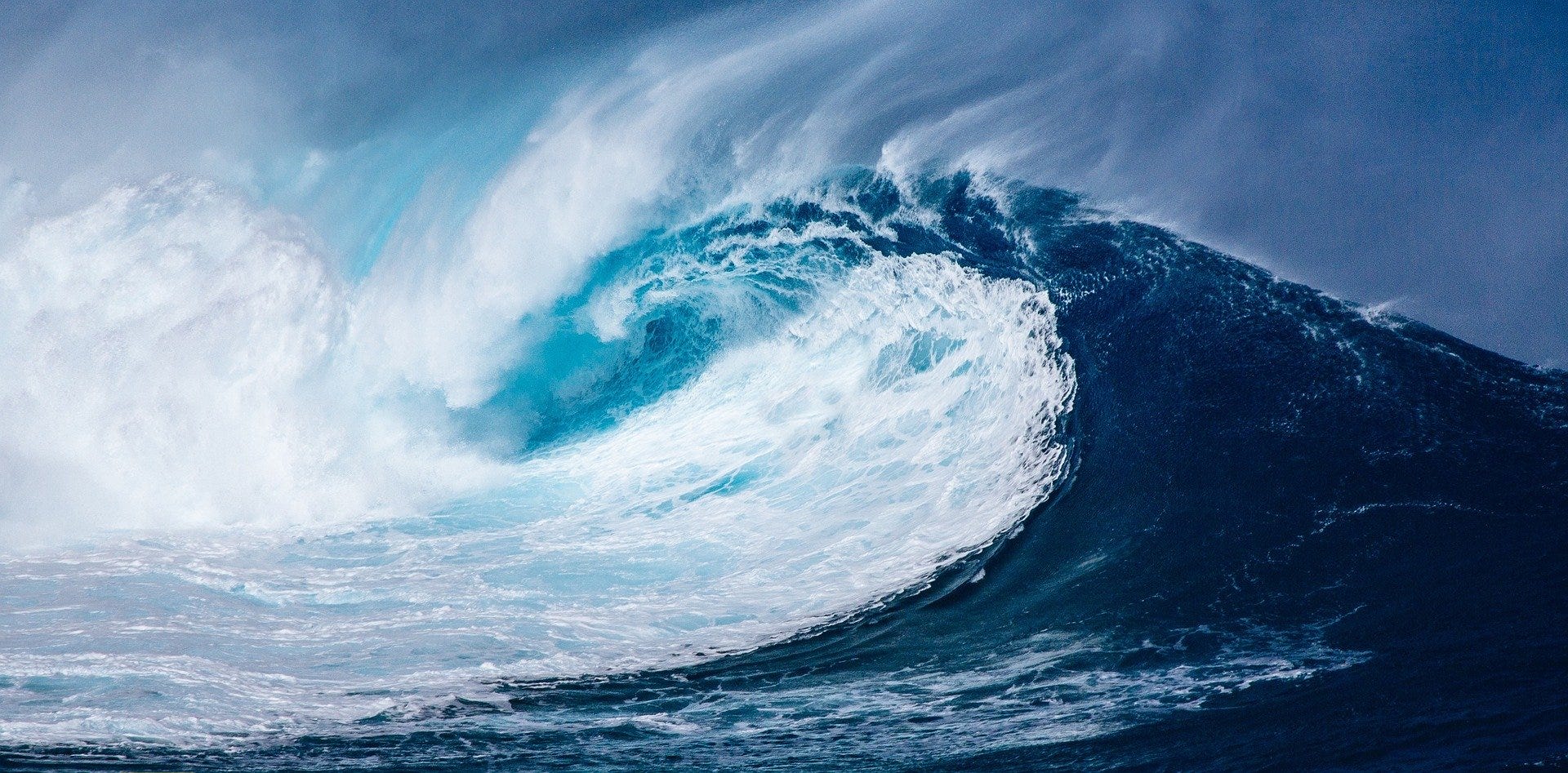
Pre-flood occupation
Scientists used to work on the assumption that Ireland was completely frozen over during the Ice Age, and therefore uninhabitable, until around 10,000 years ago. This assumption has been shattered by recent evidence.
The Pleistocene Ice Age lasted for two and a half million years and ended around 11,600 years ago. Latest research shows that even at the peak of the Ice Age, ice sheets did not completely cover Ireland. This would explain the lack of drumlins (egg-shaped ridges formed by glacial activity) across the centre of Ireland.
Another study from Norway proves conclusively that the warm, Atlantic Gulf Stream did not stop during the Ice Age as previously thought. This indicates that Ireland's Ice Age wasn't as severe as previous estimates, and evidence has been stacking up to support the claim that Ireland was inhabited by humans much earlier than currently acknowledged.
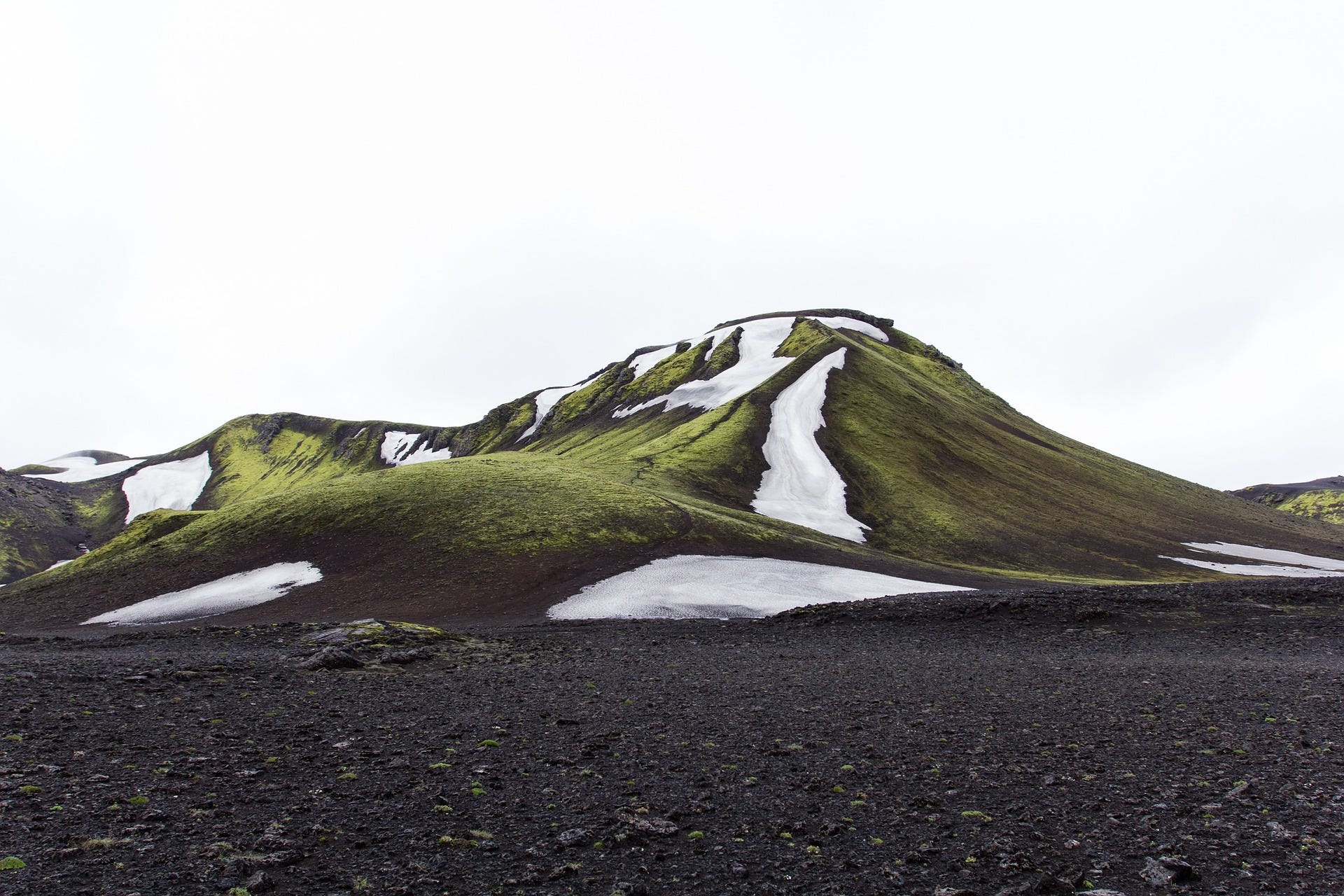
A 12,500-year-old bear bone that was cut with a human tool and found in a County Clare cave proves there were humans living in Ireland during the old Stone Age period.
In three separate places in Ireland flint stone tools have been found dating back 200,000 to 400,000 years. One find was in Mell, County Louth (10 km from Newgrange), one in Ballyculle, County Down, and one on the remote Aran Islands off the County Galway coast in the Atlantic Ocean.
A common bizarre explanation is that these human flint tools were carried to Ireland by ice sheets. However, this view originated before the latest discovery that Ireland was habitable during the Ice Age. Indeed it has been habitable for hundreds of thousands of years. This explains its many unique species of freshwater fish, flora and fauna, which differ significantly from those of neighbouring Britain and continental Europe.
Stone Age builders and sailors
It's also well known that Ireland's Stone Age constructions were built long before the Egyptian pyramids and temples.
One of these is Newgrange, Ireland's spectacular Stone Age temple. It has been verified that the builders of Newgrange used boats to transport dozens of huge boulders to the site from Clogherhead, which is over 30 km away. Some of these boulders weighed as much as 10 tons. Imagine the quality of boat and level of skill required to load and unload such huge weights, let alone transport them.
Newgrange is also perfectly aligned to the rising sun at the winter solstice, as are hundreds of Irish megaliths. This demonstrates that these early Irish people had advanced astronomical, mathematical and construction knowledge.
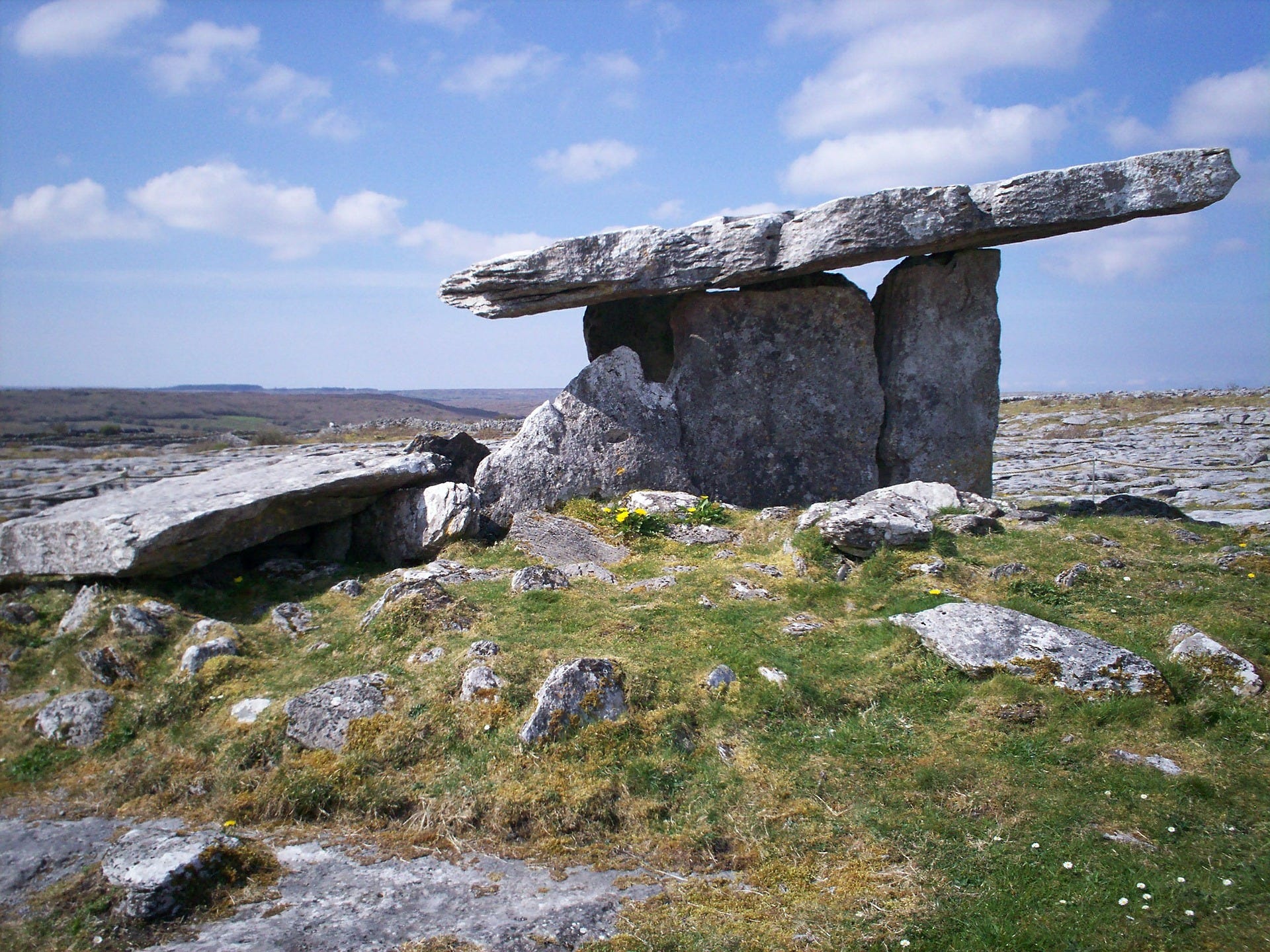
They were master astronomers. They were master builders, constructing Newgrange long before the Egyptians built the pyramids. They had boats. It's not much of a stretch to imagine them sailing from their Atlantic island home to explore the wider world. Stone Age people were a lot more mobile than they have been given credit for. Earlier this year archaeologists uncovered new evidence strongly suggesting that early humans sailed from south-east Asia to Australia on rafts 65,000 years ago.
More links
If Atlantis and Ireland are one and the same and some of the survivors of the tsunami escaped by boat to Egypt, then you would expect there to be clear links between the two places. There are many such links. One of the most interesting of these is genetic.
The stereotypical Irish combination of red hair, blue eyes and milky-white skin is the rarest genetic combination on earth. Fewer than 13 million people (0.1 percent of the global human population) possess this genetic combination.
Ireland has the highest concentration of red-haired genes in the world. Throughout history, pockets of redheads have been found scattered across the globe. These are the descendants of the ancient Irish and include the Phoenicians, Hebrews, Berbers and Indo-European Aryans. Red-haired mummies have been found all over the world, including in New Zealand, China, Peru and Alaska.

Thousands of fair and red-haired mummies have been found across Egypt. The Egyptian Pharaoh Ramesses II had red hair, as did at least six other pharaohs. Despite claims to the contrary, it has been conclusively proven that Ramesses' hair was naturally red and not coloured red as the result of a dye pigment or the embalming process. The legendary Cleopatra is also said to have had red hair.
Further evidence backs up the Ireland/Egypt connection. In genetics, a haplogroup is a group from the same human family tree that traces back to one individual ancestor. The Irish are part of the same genetic haplogroup as the lineage of the pharaohs. The highest concentration of Pharaoh Tutankhamun's Haplogroup R-M269 is found in Ireland.
Druid Circles
Perhaps most telling of all is the Nabta Playa stone circle, which is located 500 miles south of Cairo, deep in the Nubian desert, an area that once enjoyed seasonal rainfall and fertile soil. Nabta Playa is one of the oldest stone circles in the world and its construction predates the Egyptian civilization which followed.
Stone circles are also known as "druid circles" and, as mentioned, are found in virtually every country on the planet.
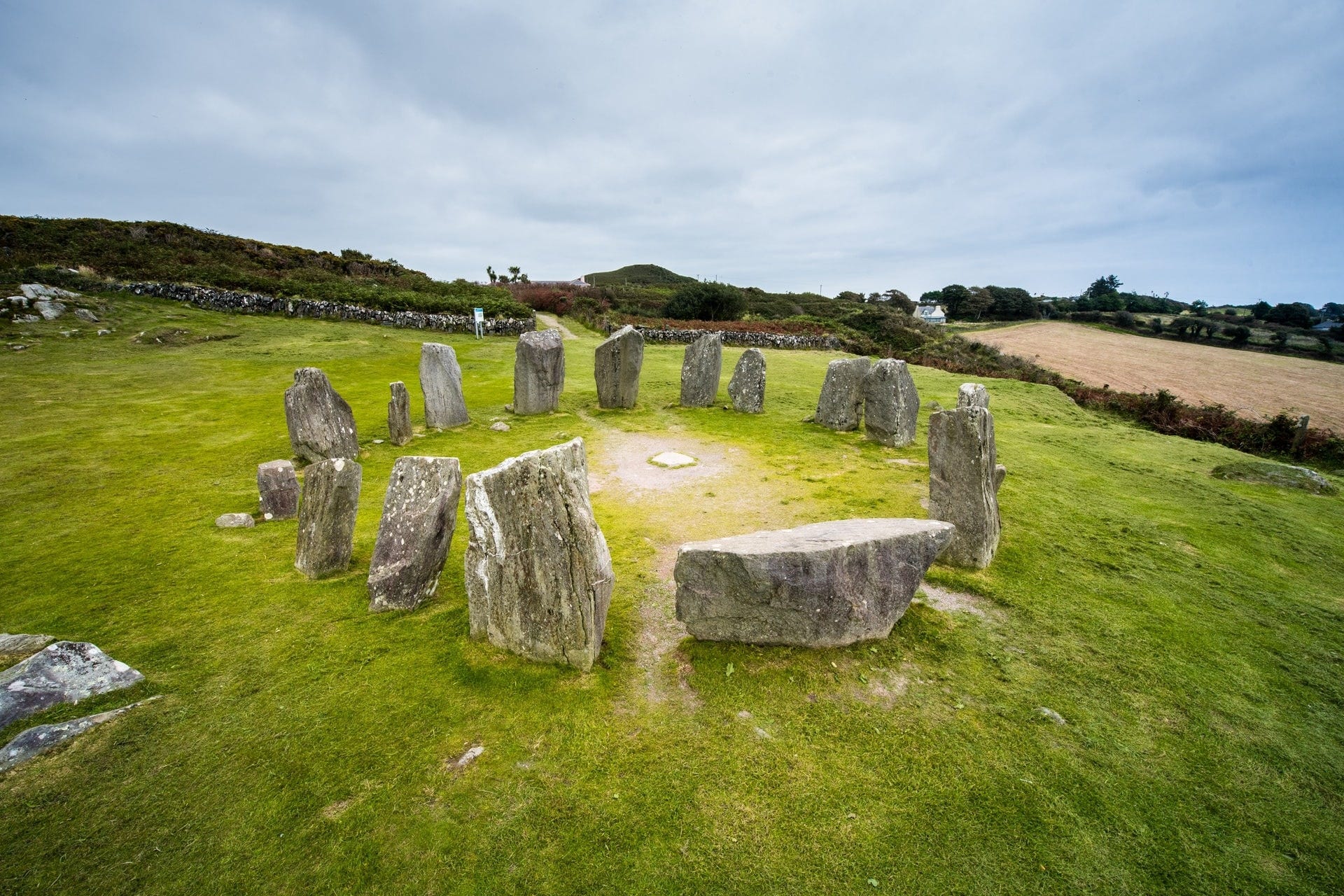
In Joseph Gwilt's timeless masterpiece The Encyclopaedia of Architecture, he states that druid stone circles predate all other forms of architecture, that the druids were the world's first race of civilised people, and that at one time the language and alphabet of the entire ancient world from Ireland to India was the same — that of the Irish druids.
It is fair to conclude that the builders of the Nabta Playa megalithic circle probably originated from the home of the most spectacular stone age constructions on earth: Ireland.
The Greek and druid connection
There is a belief that all the world's religions and civilisations have their roots in Irish Druidism, a master philosophy which predated and influenced all the others.
Every attempt was made to delete the druids from history, in particular by the Romans as they furiously destroyed the libraries, schools and temples of the ancient world, including the great library of Alexandria.
The Roman church undertook a campaign of vicious persecution and destruction against the druids. In A.D. 389 a druid college in Gaul (Bibracte, France) was destroyed by a Christian mob. This sacred druid college had an incredible 40,000 students and offered courses in numerous disciplines, including philosophy, literature, grammar, law, medicine, astronomy and architecture.
Aristotle believed philosophy came to the Greeks from the Gauls (druids).
Greek history has a detailed record of how Pythagoras, who predated Plato by almost a century, learned from an Irish druid called Abaris, who could speak Greek so fluently, it was as if he had spoken it his whole life.
Ancient Irish annals confirm that an Irish druid called Abhras visited Greece on his travels.
Abaris was from the mystical island of Hyperborea, which, like Atlantis, was another name for Ireland.
Hercules and Perseus, two of the most important characters in Greek mythology, were said to have visited Hyperborea, which was described as being a fertile island to the north of Gaul (France) with oak trees, a circular temple (Newgrange?) and priests with harps. According to the Greeks, Hyperborea was governed by the Boreades. In Irish, boreadach means noble chieftain. The obvious conclusion is that Ireland is the Greek Hyperborea.
The later Greeks, such as Aristotle, called Ireland Ierne, which means "sacred island". Over time Hyperborea became Hybernia or Hibernia, the Roman name for Ireland.
Games, law and language
The Irish civilization was already old when the Greek one was just developing. For example, the Irish Tailtean games, an ancient festival of funerary games which was revived in the 1920s, are believed to predate the Greek Olympics by more than 1,000 years, with some sources claiming they began around 1800 BC.
You may think ancient Greece or Rome created the first laws to help society operate fairly. In fact, Irish Brehon law is the oldest recorded law system, and there is evidence that it dates back three millennia. It originated as an oral tradition and was subsequently written by monks in the 7th century AD.
Linguists have searched for centuries for the common ancestor of proto languages, the missing "root language" that predates the world's oldest languages. Researchers at Keystone believe that ancient Irish Gaelic language is this missing language.
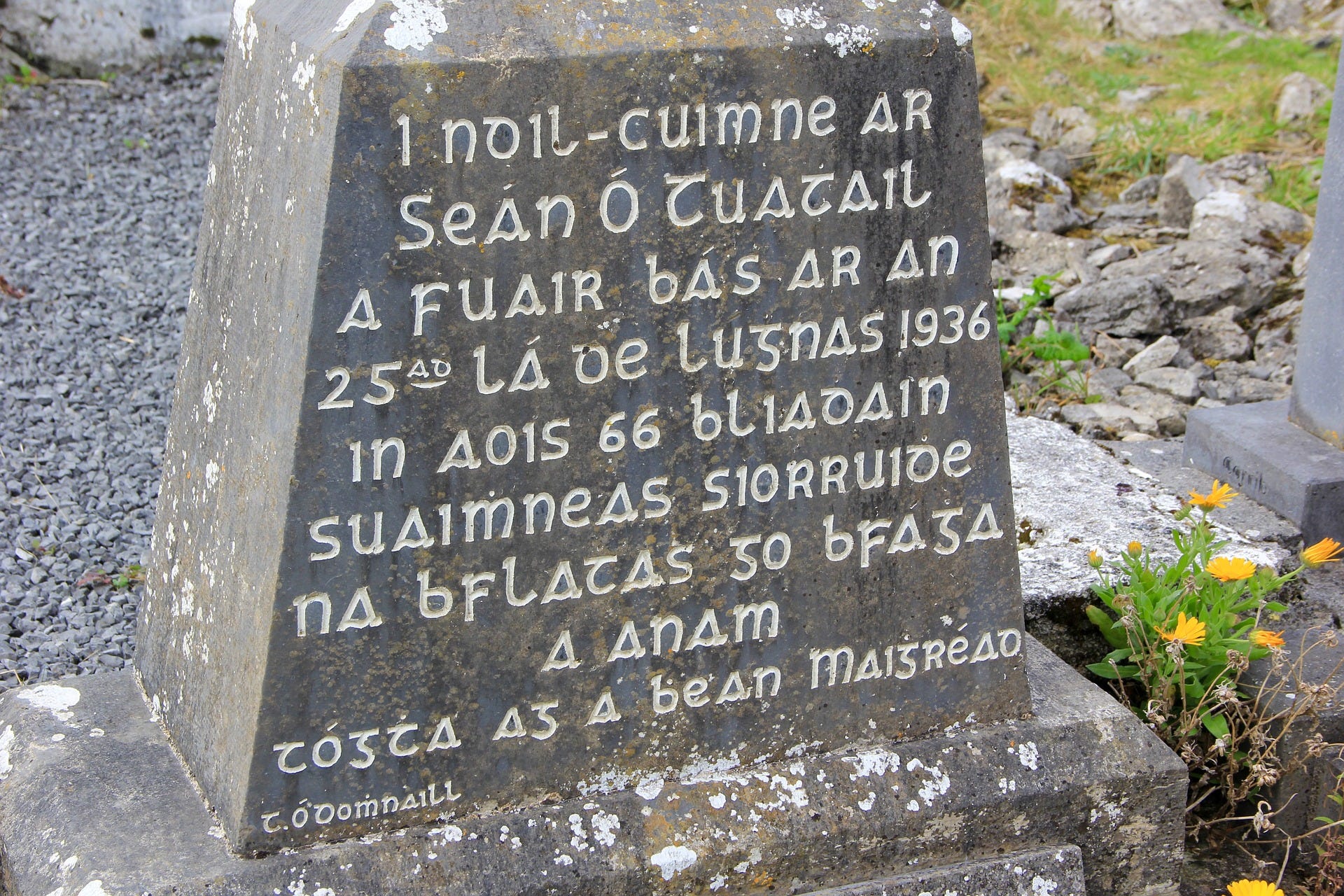
This forgotten ancient tongue, which was driven to the point of extinction during the nineteenth century, has a number of remarkable similarities to the world's oldest languages including Hebrew, Sanskrit and Arabic. The Irish Ogham or tree alphabet, probably the oldest alphabet in the world, was used to write this ancient language. Ogham inscriptions were found in the ruins of the 'Gardens of Semiramis' near Baghdad, Iraq, thought to be the location of the hanging gardens of Babylon. Ogham was also discovered in an Arabian manuscript found in Egypt and in a cave in Colorado, USA.
In conclusion
This article outlines just a few of the many pieces of evidence illustrating the advanced nature of ancient Irish society and how it is a very credible candidate for Atlantis.
The team from Keystone University know this is a risky business. A spokesperson says: "To put forward any theory on Atlantis is to open yourself up to a lot of ridicule. People can attack our findings, our organization, or the very legend of Atlantis itself, but in the end we have over 1,000 pieces of evidence to prove beyond all reasonable doubt that ancient Ireland is the legendary lost island and the mother culture of human civilisation. We don't ask anyone to believe a word we say, only to examine the evidence and think for themselves. Sixteen years ago, a brave Swedish scientist claimed that Ireland was Atlantis. Hopefully we don't have to wait this long for the mainstream to catch up, but if we do, so be it. The Irish have waited over a thousand years to clear their name. Another decade won't make any difference".
|
Has Atlantis finally been found? Has it been under our noses all the time, in the shape of the dramatic, enigmatic, charismatic island of Ireland?
Look at the facts. Then you decide.












No comments:
Post a Comment